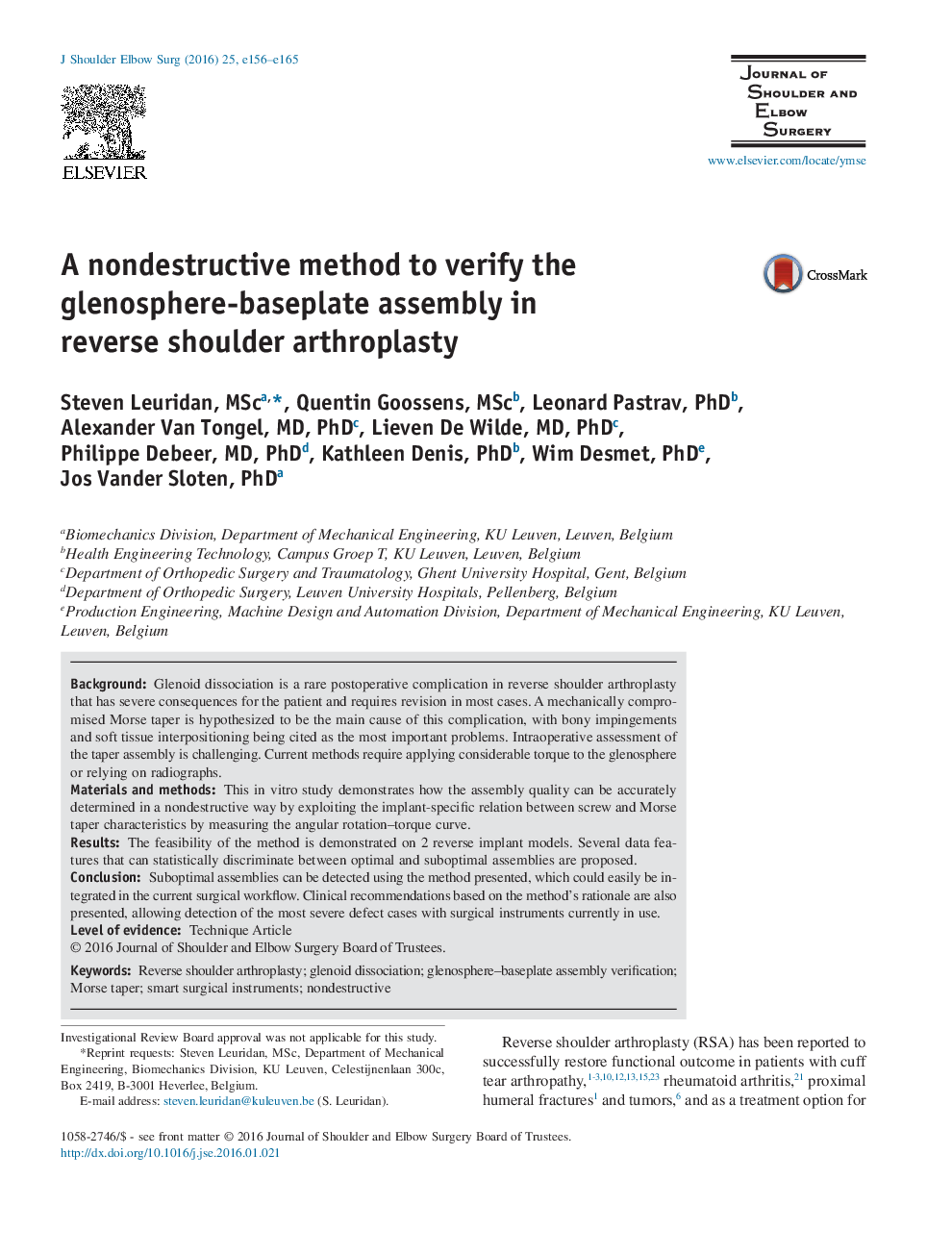| Article ID | Journal | Published Year | Pages | File Type |
|---|---|---|---|---|
| 4072887 | Journal of Shoulder and Elbow Surgery | 2016 | 10 Pages |
BackgroundGlenoid dissociation is a rare postoperative complication in reverse shoulder arthroplasty that has severe consequences for the patient and requires revision in most cases. A mechanically compromised Morse taper is hypothesized to be the main cause of this complication, with bony impingements and soft tissue interpositioning being cited as the most important problems. Intraoperative assessment of the taper assembly is challenging. Current methods require applying considerable torque to the glenosphere or relying on radiographs.Materials and methodsThis in vitro study demonstrates how the assembly quality can be accurately determined in a nondestructive way by exploiting the implant-specific relation between screw and Morse taper characteristics by measuring the angular rotation–torque curve.ResultsThe feasibility of the method is demonstrated on 2 reverse implant models. Several data features that can statistically discriminate between optimal and suboptimal assemblies are proposed.ConclusionSuboptimal assemblies can be detected using the method presented, which could easily be integrated in the current surgical workflow. Clinical recommendations based on the method's rationale are also presented, allowing detection of the most severe defect cases with surgical instruments currently in use.
